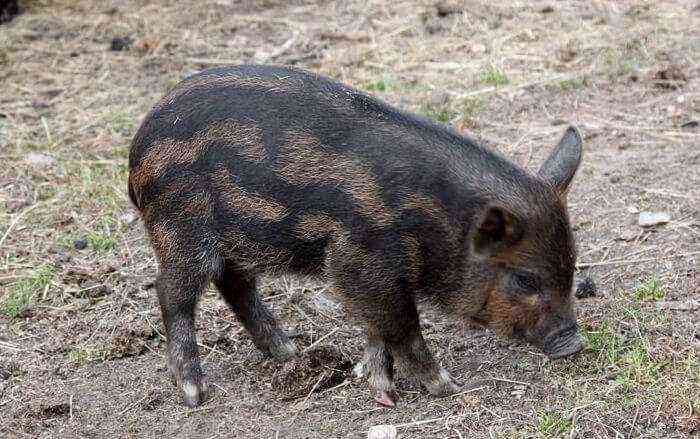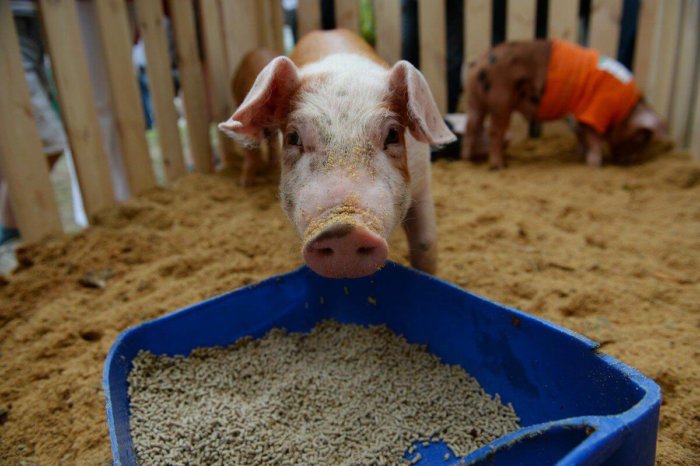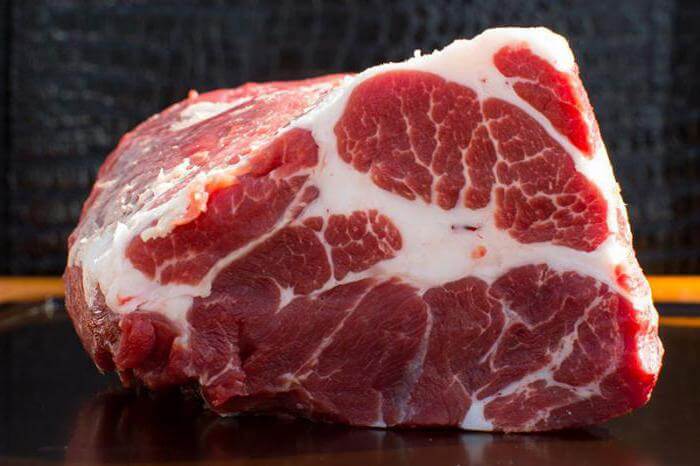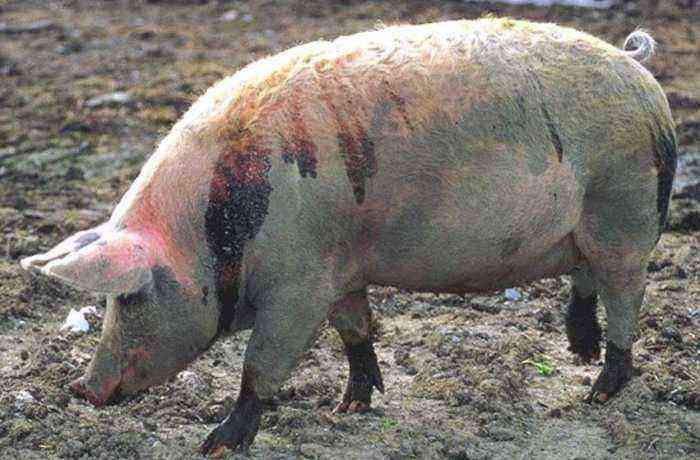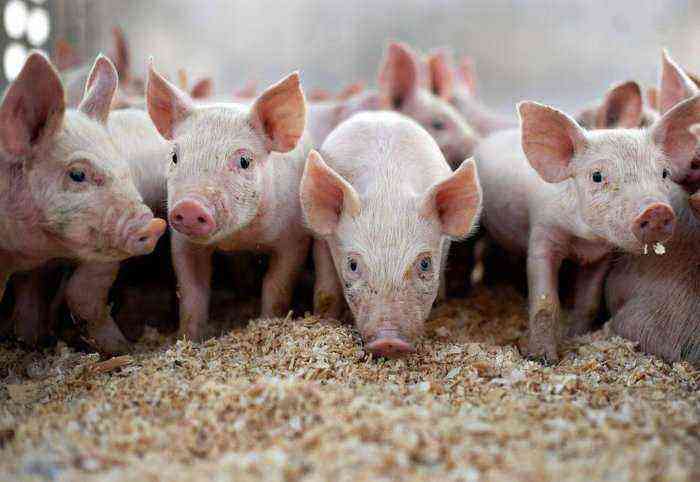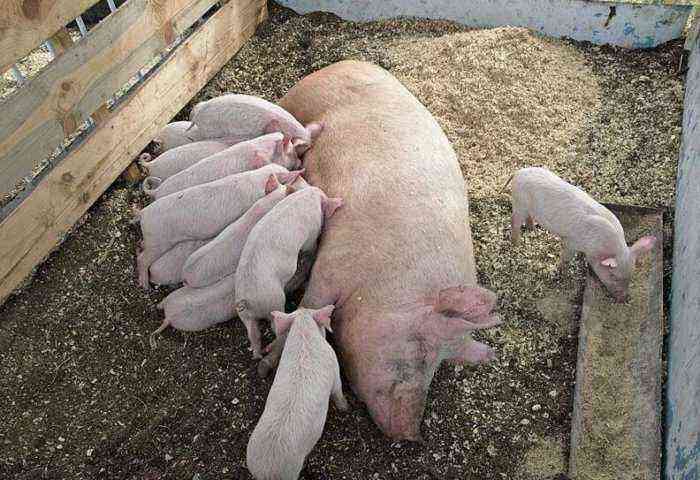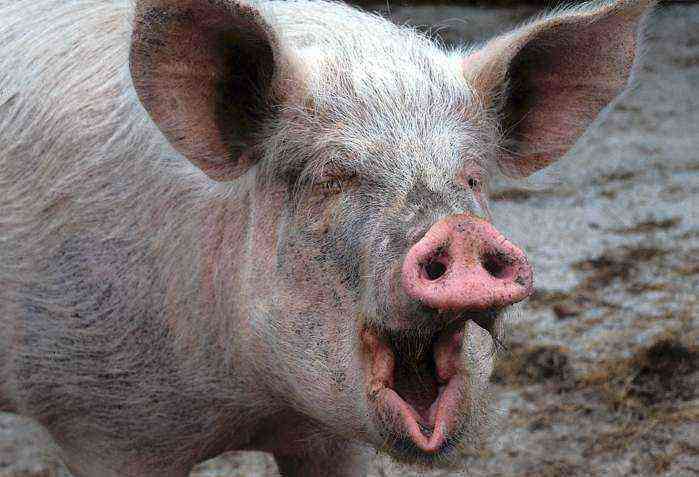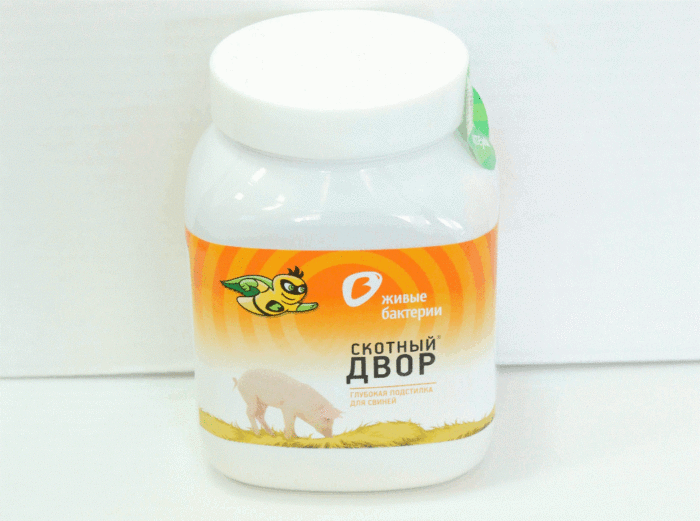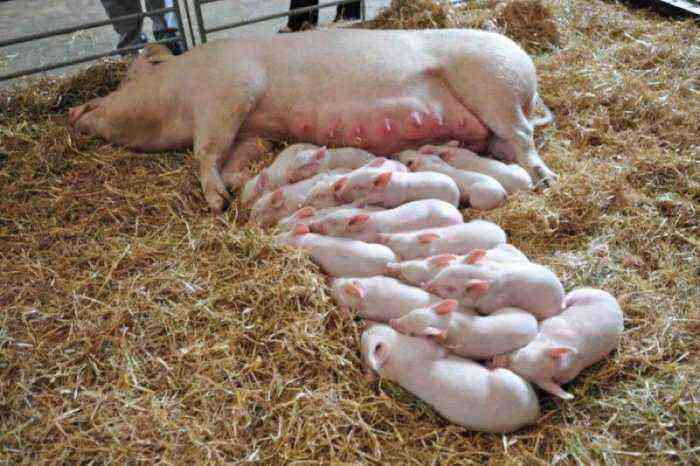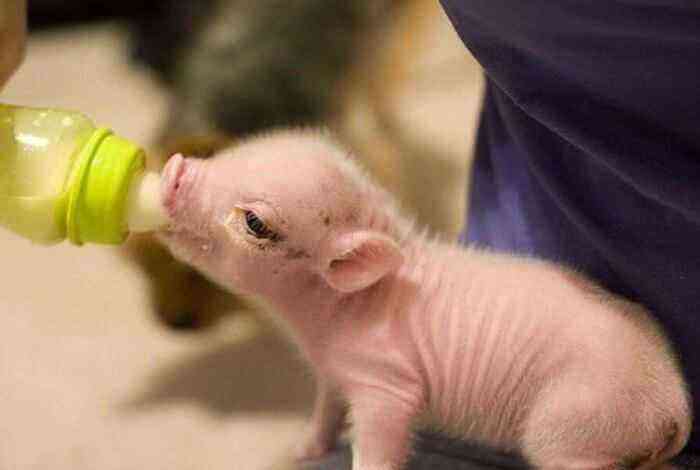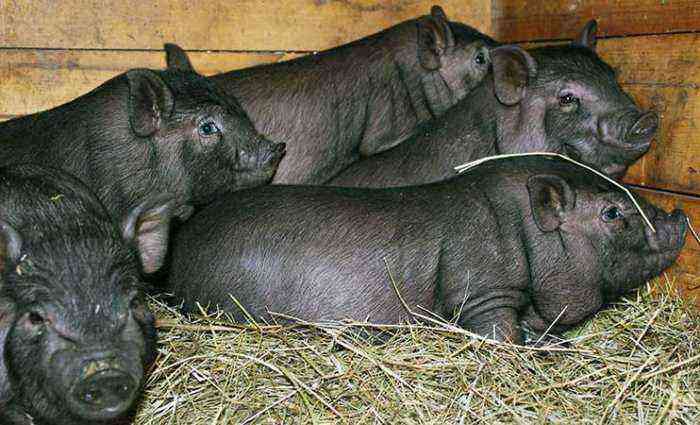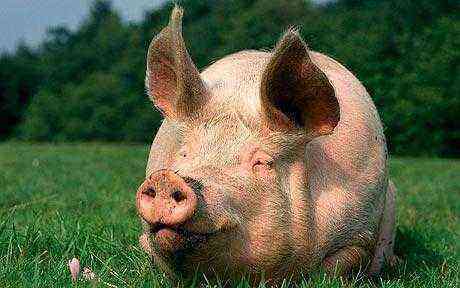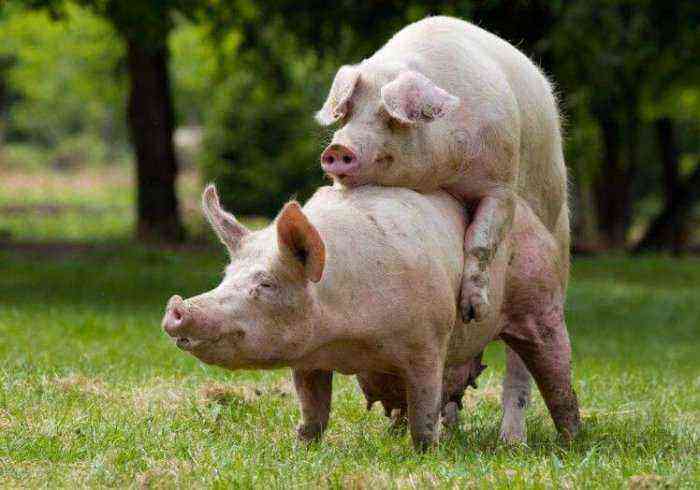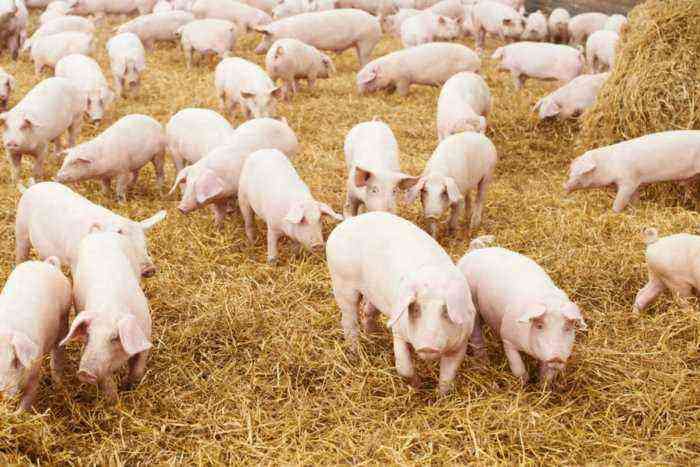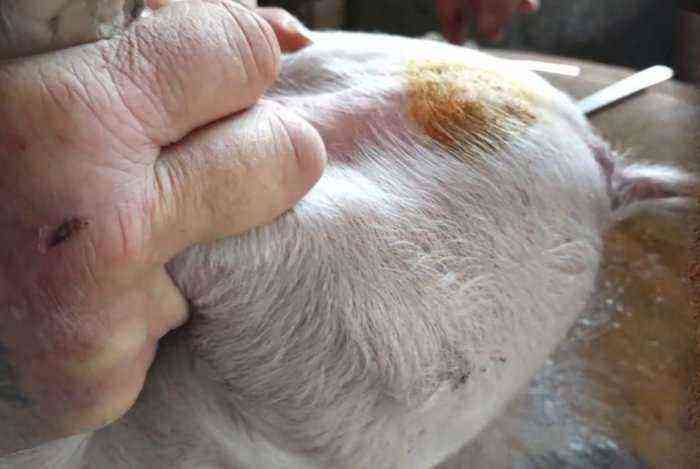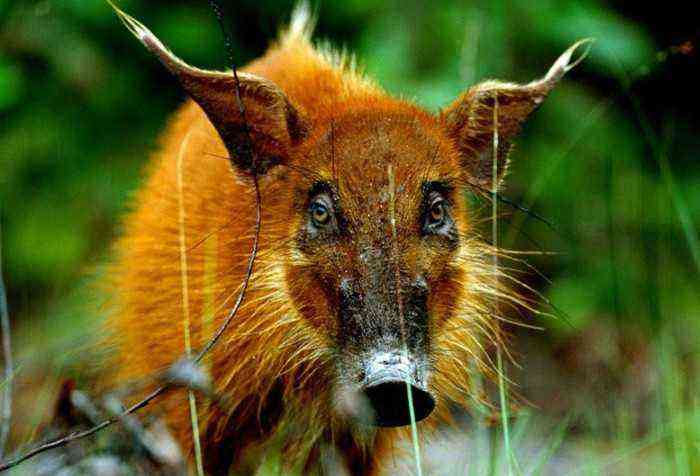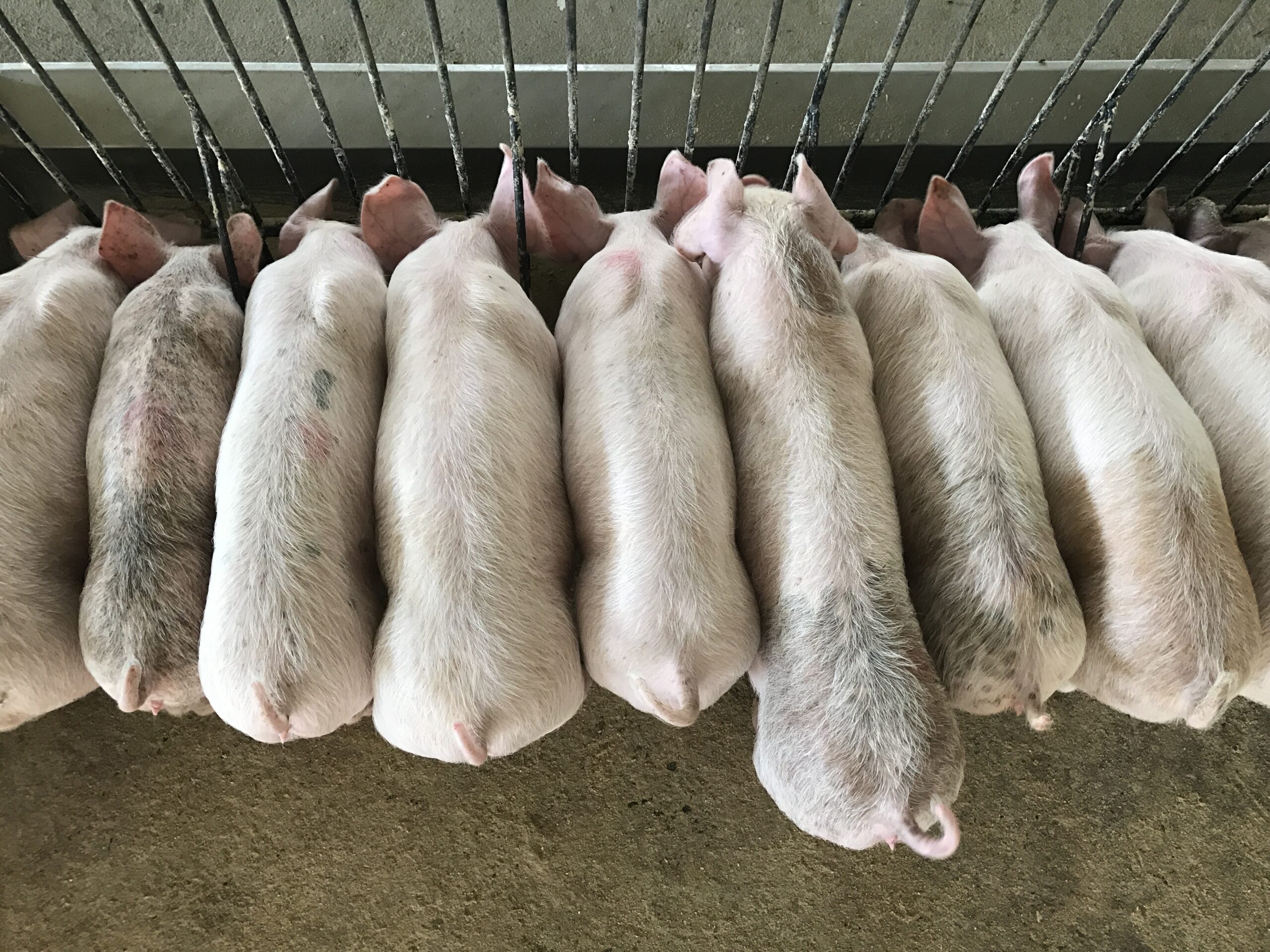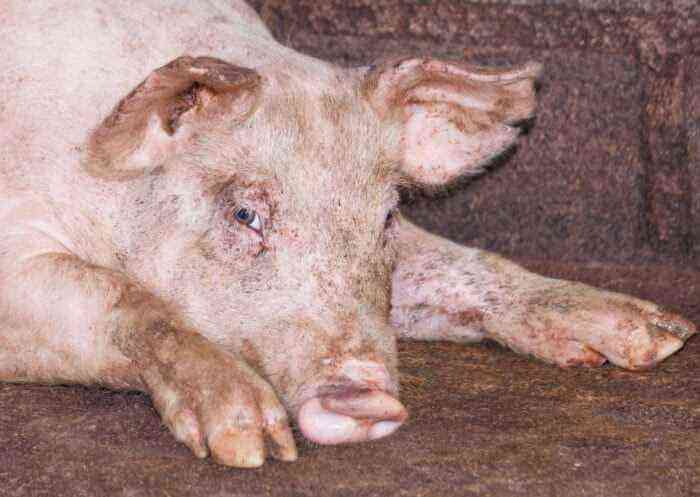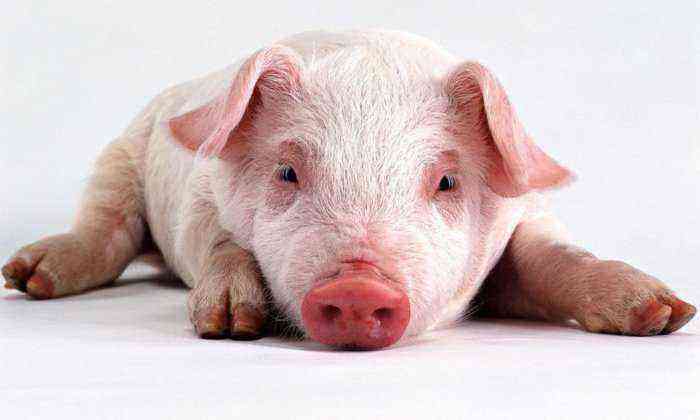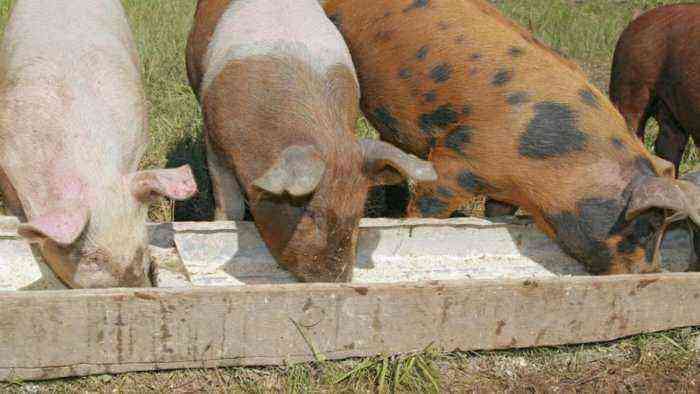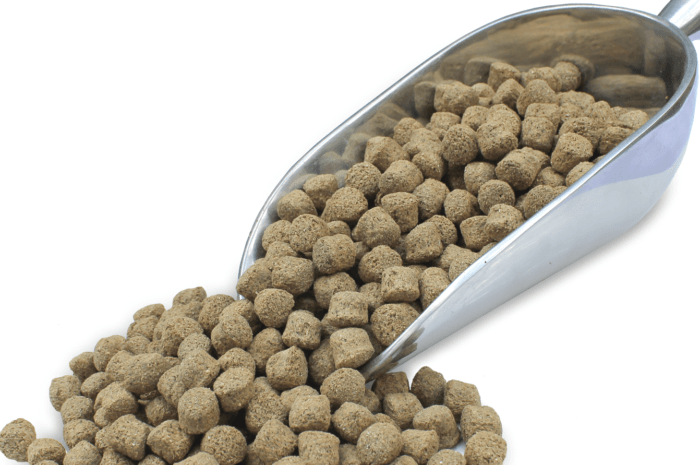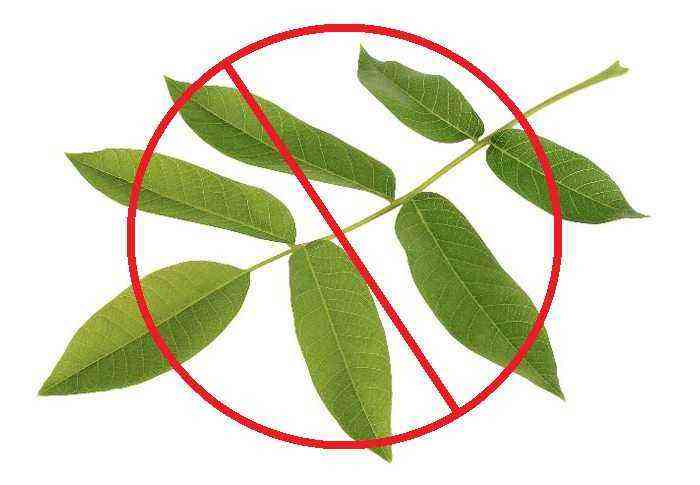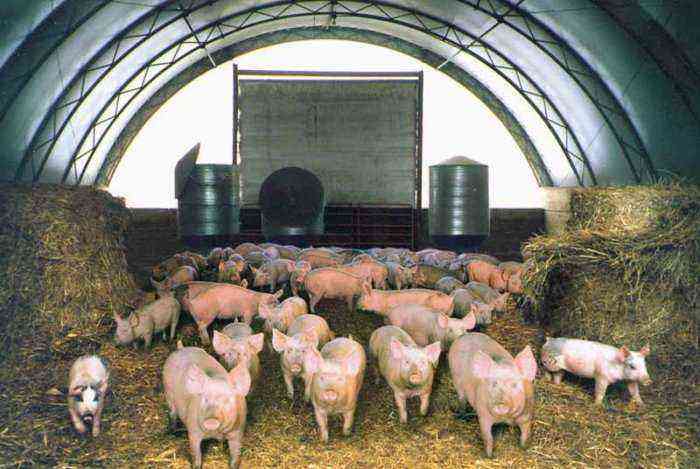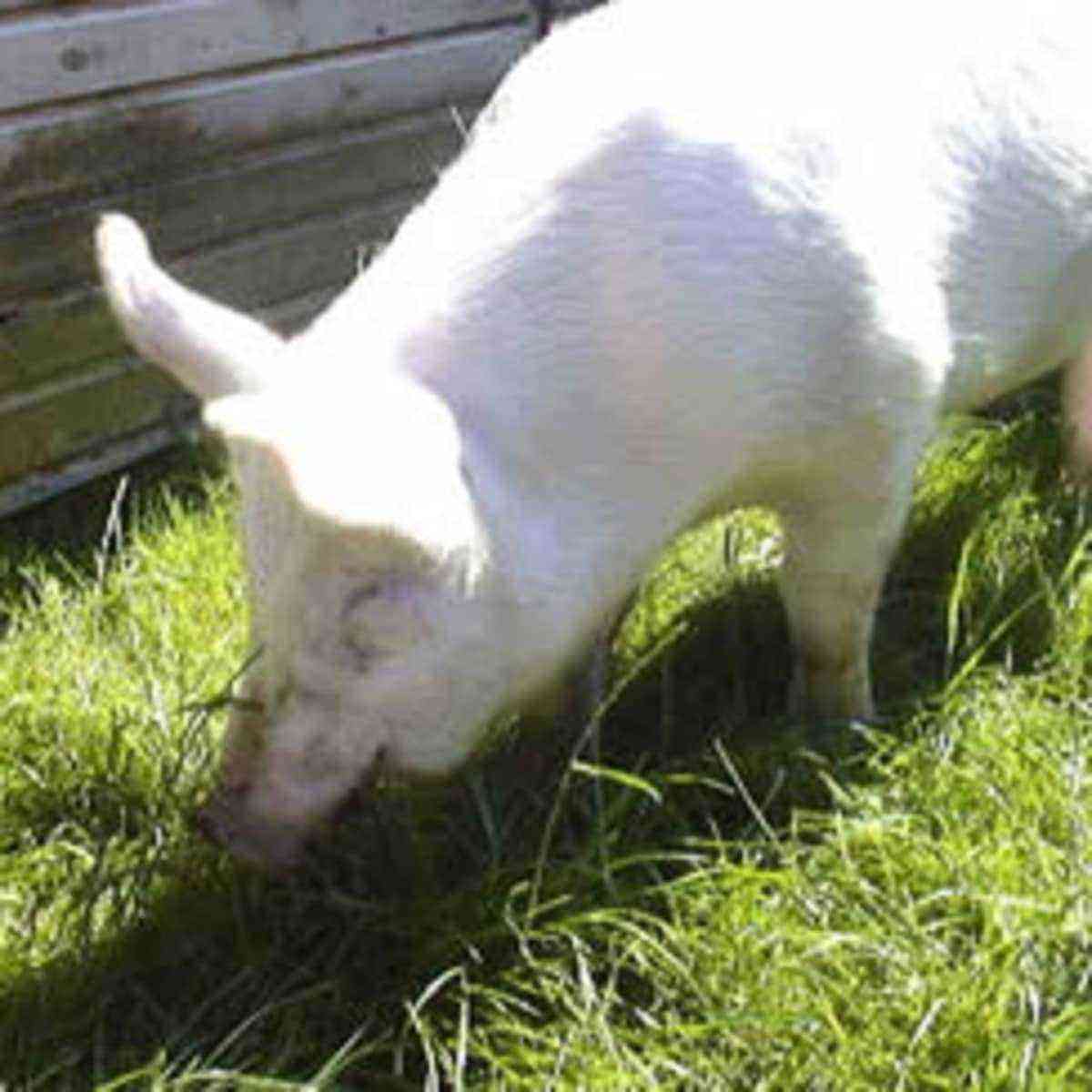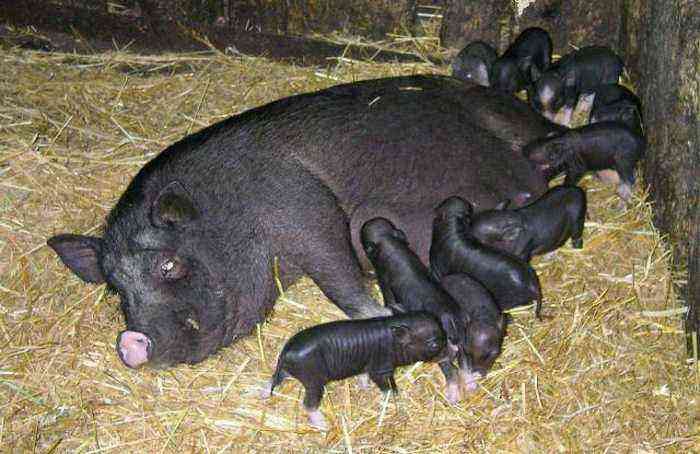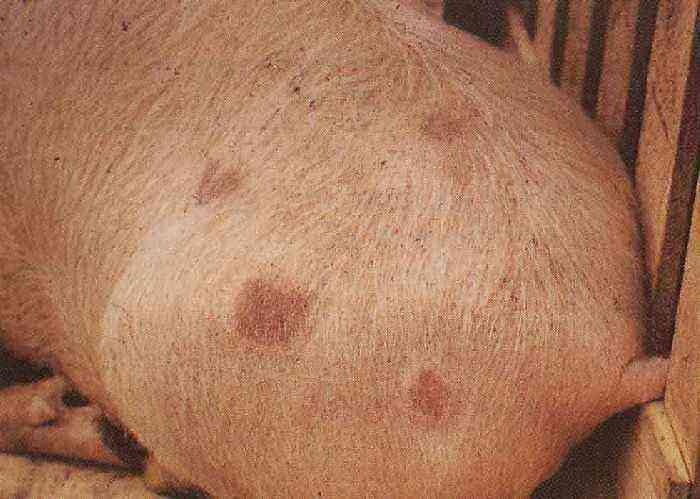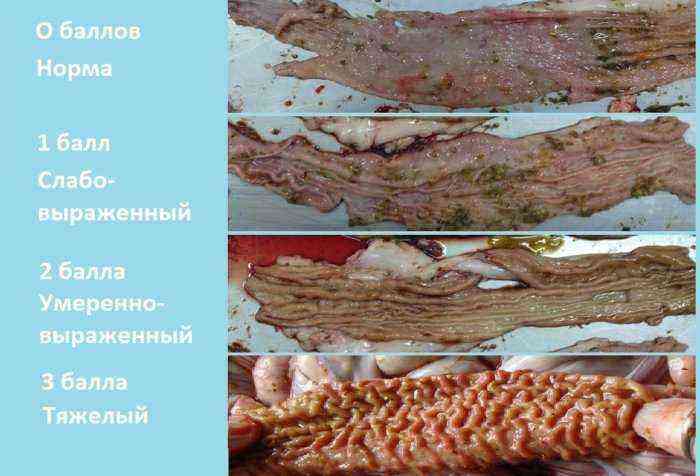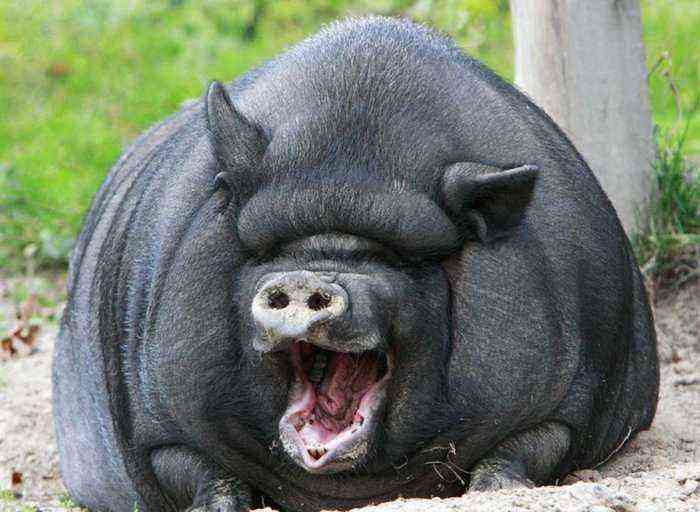The Karmaly pig breed belongs to exotic meat breeds that are becoming more common in farms. They are valued for their high productivity, undemanding food volumes, rapid weight gain and disease resistance.
Pig breed Karmaly
Pigs of this breed have a calmer, more docile nature, and are much cheaper to maintain than ordinary pigs.
REFERENCE. When breeding karmals, you can get an increase of 150-200 kg of weight in 1,5 years. In this case, the resulting meat will contain a small amount of fat. When cutting carcasses, fat is very easily separated from the pulp. Despite the large amount of wool, the shabby skin of the karmal remains soft and clean.
Origin and external features
Karmal pigs were obtained by crossing herbivorous pig breeds: Mangal (Vietnamese bellied pig) and Korean. Gradually, breeders began to distinguish 2 types of hybrids:
- Ordinary pocket. The result of crossing a Vietnamese boar and a Korean pig. Although she took the best from her ancestors, she is inferior in quality and taste of meat to the royal species.
- Royal pocket. This species was obtained as a result of further crossing pigs of the usual Karmal with boars of the Mangal breed. Thus, the royal karmal has 75% of the genes from the magnal, and the remaining 25% from the Korean breed. It is this hybrid that has established itself as optimal for mass breeding due to the excellent taste of meat, which is classified as a gourmet product.
Outwardly, pigs of the Karmaly breed are not much different from wild boars. Their body is covered with long and thick hair, which warms the animal during the cold season. This is what determines the simplicity of their maintenance: they do not require the construction of a pigsty, a simple pen is enough. In winter, pigs of this breed walk freely, dig snow and grunt.
Piglet karmaly
Karmaly piglets are striped, have red, black or gray coats. Grown up piglets have a long-legged taut silhouette. Perhaps this is due to greater playfulness and mobility than the young of an ordinary pig. Adult pigs and karmal boars are also outwardly more accurate and aesthetic. Their coat becomes ashy, brown or black as they grow older.
Breeding Karmaly pigs
An important advantage of Karmala pigs is good fertility and ease of breeding. Sows of this breed are capable of giving birth to 20 piglets, while all babies, as a rule, are viable and healthy. Karmals reach sexual maturity very quickly: a pig is ready to mate already when it reaches 4 months of age, and a boar can bear offspring after reaching 5 months of age. To breed the breed, it is enough to organize a small covered barn with an adjacent aviary for walking.
Other features of breeding karmals:
- a pregnant pig does not require any special care, it remains clean and independent;
- the pig itself serves the farrowing, feeds it with its own milk, which is enough for all piglets;
- week-old karmala piglets, born in the warm season, can already pluck grass on their own;
- at the age of one month, piglets completely switch to an adult diet.
REFERENCE. In a year, a pig of the Karmaly breed is capable of producing 50-60 piglets of offspring.
The offspring is distinguished by a high degree of viability and good innate immunity, which makes it possible to obtain maximum performance indicators for livestock farms. The diet of piglets until the full transition to adult food includes up to 70% concentrated feed, up to 20% soft vegetables and a small amount of additives in the form of fish with soft bones, bone and legume meal.
Pig feeding
When choosing a piglet for fattening, it is worth choosing from the most noisy and mobile, firmly standing on legs, with a tail that does not fit to the body. It is also important that the piglet has dense, uniform bristles.
Maintenance and care
Pigs of the Karmaly breed can be bred in any region of the country. They are often used to improve the quality of the main breeds of pigs bred on local farms. In order to ensure normal conditions of detention, it is enough to allocate a separate area, fenced with a fence. The only condition that must be taken into account in this case is that animals do not like drafts. Animals can be in an open corral from the age of two months.
Pigs have a calm disposition. When organizing their living space, there is no need to be afraid of undermining and breakage of fences. During grazing, karmals try to stay in a herd, do not attack people or other animals.
Karmaly pigs are characterized by complete unpretentiousness in food. Given sufficient areas, pigs can be almost entirely free-range during the summer. Animals eat grass, vegetables, look for and dig up acorns, pick up fallen apples. For a good weight gain, the diet can include:
- crushed and whole grains, cereals;
- food waste;
- vegetables, especially fodder and sugar beet;
- ready-made feed mixtures.
Regardless of the diet and the amount of feed consumed, the meat of Karmal pigs remains juicy, tender, with a low fat content.
Karmala pig meat
Based on the main characteristics of Karmals, we can conclude that this is one of the optimal breeds for breeding. Disease resistance, low cost fattening, stable high yields and the ability to use wool for yarn production and additional income are important characteristics that play a key role in selection. Karmal meat tastes like young veal, it differs from ordinary pork in its lower fat content, refined taste, and pleasant smell. Increased leanness of meat is an additional advantage of this hybrid breed of pigs.
